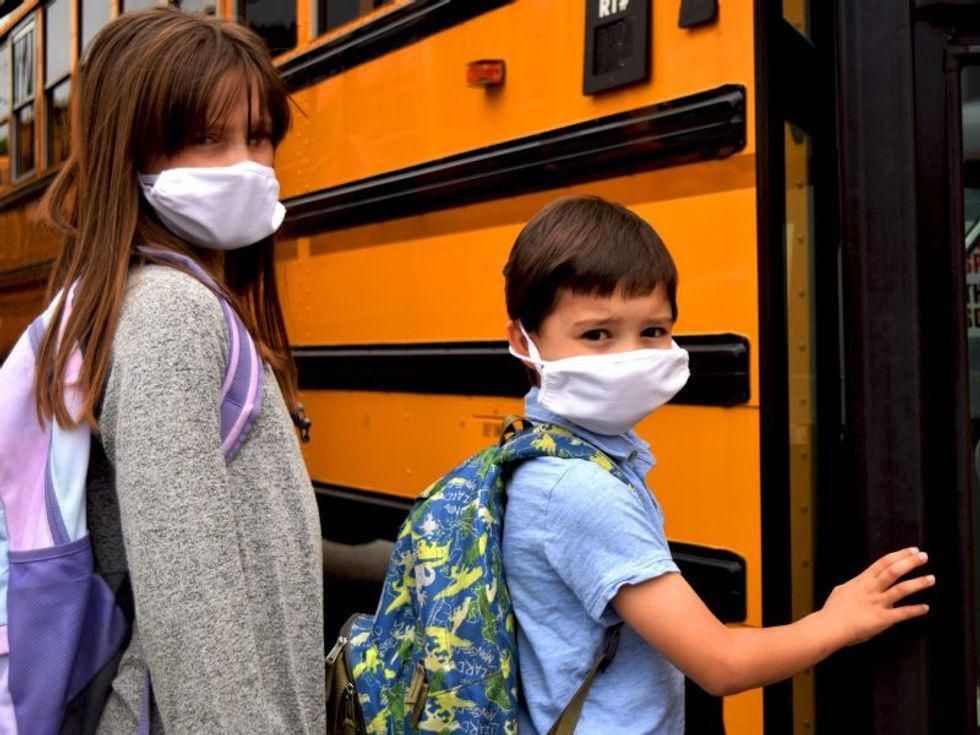MONDAY, July 26, 2021 (HealthDay News) — New research offers some reassuring news for parents of kids returning to school soon: The risk of acquiring COVID-19 on the school bus is very low when proper precautions are taken.
With open windows, mandated masking and two kids per seat, there was no transmission of the new coronavirus linked to busing even during the height of the pandemic, the study found.
“Until recently, there has been a paucity of data related to bus transportation and the transmission of COVID-19,” said Dr. Teresa Murray Amato, chair of emergency medicine at Long Island Jewish Forest Hills Hospital, in New York City. “This is a promising study that appears to confirm that mask-wearing and air filtration can make bus transportation safe for children during this pandemic,” said Amato, who has no ties to the study.
For the study, all in-person students at a small private school in Virginia were tested for COVID-19 every two weeks initially and then every week from Aug. 28, 2020 to March 19, 2021, when community transmission of the virus was at its peak. Of these, about 460 students took buses to and from school. During this time, 39 bused kids from 15 buses developed COVID-19. This resulted in a quarantine of 52 students.
But there was no further transmission linked to bus transportation, the study found. The report was published in the July 21 issue of the Journal of School Health.
To boost ventilation on the bus, there were one-inch window openings in the middle two windows and in the windows in the last row of the bus regardless of the weather. All students had assigned seats, with older students in the back of the bus and younger kids in the front. All students wore masks on the bus, which is in line with recent recommendations by the American Academy of Pediatrics that students, teachers and staff should wear masks when in school.
The U.S. Centers for Disease Control and Prevention calls for a distance of three to six feet between students on buses, but this isn’t always feasible, and the new study showed that 2.5 feet is acceptable.
“Many districts simply do not have enough buses and drivers to allow distancing of three to six feet or skipping of bus rows while still providing rides to all children … as many families are unable to drive their children to school each day,” study author Dr. Dana Ramirez, a pediatrician at Children’s Hospital of the King’s Daughters in Norfolk, Va., said in a journal news release.
Hand sanitizer was available on the bus, but its use wasn’t required. There weren’t any temperature checks upon boarding the bus either, but parents were asked to report any signs of illness, and kids’ temperatures were checked upon arrival at school.
The school bus is not where students are becoming infected with COVID-19 when basic precautionary measures are taken, said Xiaoyan Song. She is the director of infection control and epidemiology at Children’s National Hospital, in Washington, D.C.
“Protecting these students at home and in the community remains prudent,” said Song, who was not involved in the new research. “The more adults that get vaccinated, the fewer sick adults these children would be exposed to, which will create a safety net for children.”
The highly transmissible Delta variant is now responsible for the overwhelming majority of COVID-19 cases in the United States, and this may change things in the coming school year, Song said.
“The Delta variant could increase a student’s chance to come across someone with the virus on the school bus,” she said. But “as long as the student continues to practice the basic protective measures, including masking and social distancing, their chance of getting the virus on a school bus remains very low.”
Parents and caregivers should remain vigilant for signs of illness. “If a child doesn’t feel well, do not send the child to the school bus and school,” Song advised.
Teachers, school administrators and bus drivers should serve as role models by keeping masks on during a ride, not coming to work when sick or in quarantine, and communicating with local public health authorities, parents and staff when a student is found to be positive with COVID-19 infection.
More information
The American Academy of Pediatrics offers more advice on keeping students safe during in-person learning.
SOURCES: Teresa Murray Amato, MD, chair, emergency medicine, Long Island Jewish Forest Hills, New York City; Xiaoyan Song, PhD, MBBS, MSc, director, infection control and epidemiology, Children’s National Hospital, Washington, D.C.; Journal of School Health, July 21, 2021
Copyright © 2025 HealthDay. All rights reserved.

